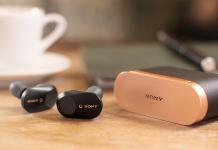There are dozen upon dozens of smartphones released each year so how do you choose the one that will suit you best? Read our guide to find out.
Every year, without fail it’s guaranteed that Apple will release an iPhone (or two) with slightly better features than its predecessors. Samsung too, will also likely release handful of handsets along with LG, HTC, Xiaomi and the rest of their Android phone-making competitors. And did I mentioned that Microsoft’s Windows Phones are picking up steam too? Don’t forget Blackberry either! Sure, the days of Blackberry being on top may be over but they’re still making plays for your money in more ways than one. This is all before we’ve discussed the phones that don’t run on any of these operating systems either so it’s perfectly normal to be overwhelmed by the plethora of smartphone options. But it doesn’t have to be the world’s hardest decision, not at all, so read our guide below to find out how to buy the best smartphone for you.
1. Operating System
As explained, there are tons of operating systems out there, each offering a varied amount of features and options. Of the OS offerings, iOS, Android and Windows Phone are the three heaviest hitters and each are vastly different. For a closed off, clean and relatively easy to use operating system, go with iOS. iPhones make you get apps from the App Store and music has to go through iTunes but if you don’t know what you’re doing when it comes to smartphones then the ease of use will benefit you greatly. Meanwhile, Android is almost like a PC on the go. Various file types and such are available and you can download things on the go without having to go through the rigmarole of iTunes or anything else. It can be a bit complicated but you’ll appreciate the breadth of options. Windows Phone handsets on the other hand are a bit like a mullet – business in the front, party way, way in the back. Designed to help business professionals, the way Windows Phones work with Windows PCs is truly something special. Cortana, the Windows Phone assistant (and Microsoft’s answer to iOS’ Siri) is also a bonus.
2. Specs
The great thing about having so many smartphones to choose from is that we can choose the technical specifications we need according to our interests and uses. There are five key specs to consider when shopping around for a new smartphone and these are – RAM, processor, camera, screen size/quality and storage. Plenty of phones worth their salt come with 2GB of RAM (only a few of the newer ones come with 3GB) as it dictates how many things your phone can do and how quickly it can do them. Standing for Random Access Memory, the smartphone in question will be able to access this pocket of data on the fly and get things done. Ergo, it’s important. Processors are just as vital too though, usually offered as dual-core, quad-core or the very recent octa-core, the processor is basically the brain of the smartphone. The best phones have quad-core processors at 2GHz or over but it’s recommended not to settle for anything less than 1.5.
Cameras are only important depending on how many selfies you plan on taking or how often you want to share snaps of your lunch on Instagram but alas, a 5 Megapixel rear camera is my personal benchmark here. Because lots of phones have two cameras these days, the front-facing camera will often be 2 Megapixels or even worse but the rear camera is the most important one to consider as even if your front camera never shows your face in good quality, you can always flip your phone around.
Your preferred screen size will depend on how big your hands are. If you have dainty digits then anything above 5-inches is going to be a hassle and if you’ve typically used quite small phones than the jump to a much larger handset is going to be cumbersome at first and may take some getting used to. You’ll also want to factor in screen quality. Individual labels for screens are significantly less important but if you make sure that the phone can display things in 1080p HD at least (if you could see some examples of this if a demo is available, that would be particularly helpful) before you consider buying.
Internal storage is a spec that you’ll want to consider if you have a lot of music, plan on taking a lot of photos or if you’re going to be watching lots of media when you’re out and about. Even if you can’t afford the highest level of storage (this is often the 32 or 64GB version of the phone) then consider if the phone allows for microSD cards as these can store extra media and apps that your phone doesn’t have room for.
3. Design
As the iPhone is known for its rectangular, straight-edged design, while Samsung’s line of Galaxy smartphones are plastic and round and the HTC One line is both round and metallic (the HTC One’s metal unibody design was a back of the box feature), you’ll understand that they are all vividly different. The Nokia Lumia line of Windows Phones also boast boldness over everything which could also potentially sway your decisions.
The reason it’s important to consider design is not just because you want to show off how slick your phone looks, but because in the long-run picking a phone with a design you don’t love can grate on you. The Samsung Galaxy handsets for example, are very comfortable on account of that plastic but when you’ve paid several hundreds of dollars for a phone, a plastic back may not be something that you’re best pleased with, the straight edges of the iPhone can make the phone fit oddly in some hands and the Lumia’s brightness might make you think twice if you’re preparing to use it for Serious Business.
What’s also key is that the more popular the phone, the more design options you have thanks to the availability of smartphone cases. iPhones are the number one here but HTC and Samsung’s flagships also have a variety of cases on offer. The Nokia Lumia line offers a very good range of colours and styles as it is, so although there are scant few cases for them available, you’ll still be able to change it up a little.
4. Price
Finally, the cost. This will often be the deciding factor in whatever you buy – in the smartphone market or not – and rightly so. Smartphones come in budget, mid-range and high-end flavours. Budget phones are valuable purchases if you are perhaps new to the smartphone game, don’t plan on using apps extensively and aren’t looking for the quickest thing out there. You can pick up a budget handset for $200, which is somewhat of a bargain. Mid-range phones don’t skimp on quality too much though and you can get high quality specs at much lower prices, thankfully and although you’ll have to compromise on some specs, mid-range phones don’t need them to get a good performance. High-end phones are obviously the most expensive and can run you upwards of $400/£400 depending on your local currency. You will be getting the best there is but they also come with pricier contracts and if you’re one who is easily swayed by the allure of the latest and greatest, keep in mind that something better will come along in the next year and it will cost you if you want to constantly upgrade.
So these are the key points to remember when buying a smartphone that suits you, but what else do you think people should look out for? Let us know in the comments.
Be social! Follow Walyou on Facebook and Twitter, and read more related stories, Smartphones That Use Sound to Recharge Put Beefy Batteries to a Rest, Xiaomi Overtakes Samsung as China’s Leading Smartphone Vendor











